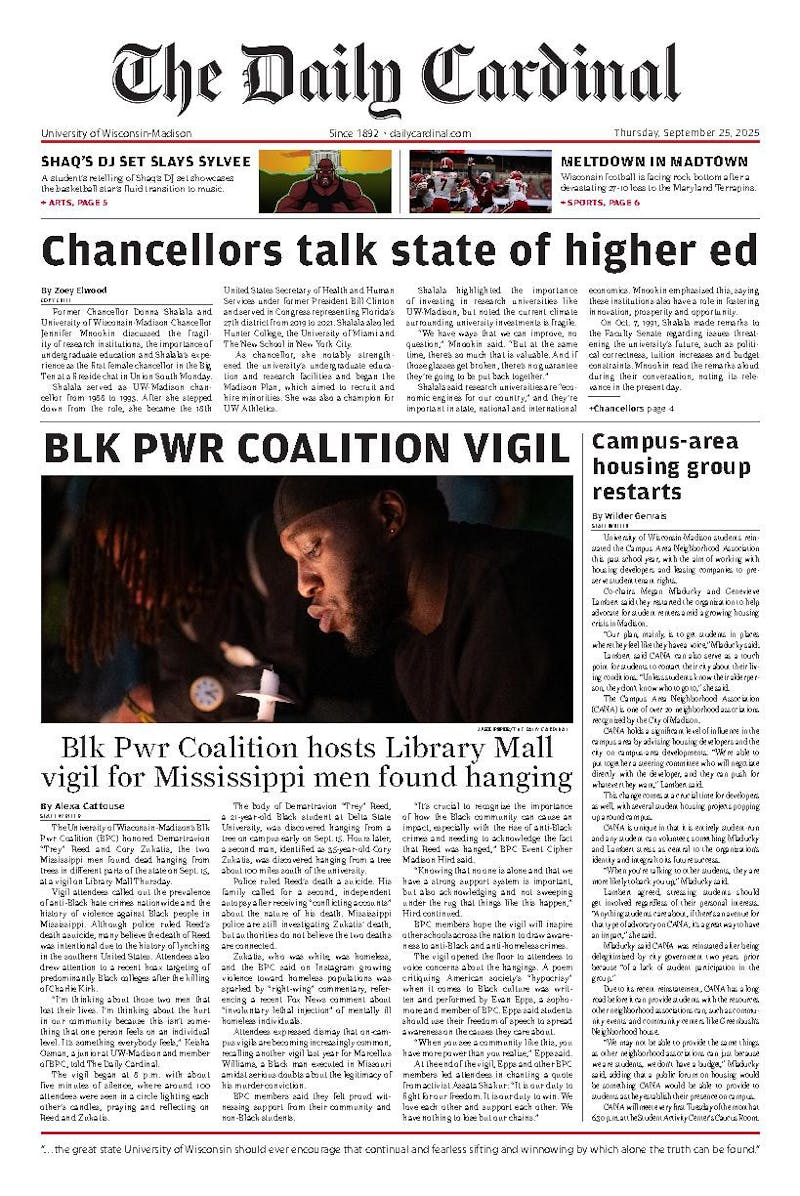In a March 27 letter to Gov. Jim Doyle, Republican gubernatorial candidate Mark Green called for a spending limit on their campaigns of $5,536,200—one dollar for every citizen of Wisconsin. The deal was quickly rejected by Doyle's campaign. While Green's move may look good on paper, it is obvious to many how hypocritical and political it truly is.
It is funny how the candidate with the least amount of money calls for a spending limit. Where was this sign of good will during the Republican primary? Scott Walker was forced to drop out of the race due to a lack of campaign funding. In January, Green had $2.1 million in the bank, compared to Walker's $563,000. If he truly wanted a clean campaign with limited spending, should he not have offered the same pledge to Walker?
It all comes down to Green's position in the race. With approximately half as much money as Doyle, the Green campaign is scared. Doyle's rejection of the deal makes him look greedy, something which is obviously good for his opponent. But the hypocrisy of Mark Green is abhorrent.
Cory Liebmann from Eye on Wisconsin finds Green's true colors at opensecrets.org. In the 2000 election Green raised $803,158, while his opponent Dean Reich raised just $15,235. In 2002, Green raised $876,073, while his opponent Andrew Becker appeared to raise $0. The same story in 2004—Green raised $1,040,373, Dottie LeClair only $13,191. Yes, Green sure knows a lot about clean campaigns.
Green obviously did not spend all of that money. So where did it go? To his campaign for governor of course. Through a legal loophole Green was able to transfer the money raised for his federal campaigns to his state campaign. According to Bill Christofferson, the majority of that money was raised from sources that are either illegal or not available to a state candidate to access.\ That sum, $1.3 million, pushed Green way beyond Walker in campaign fundraising. Again, the hypocrisy shines through.
Along with the spending limit, Green also proposed to ask independent organizations not to run negative attack ads. If ads are run, he also suggested ""the costs associated with any attack advertising be deducted from the ‘beneficiary's' spending limit""—something the candidates obviously have no control over and the law forbids them to do.
Melanie Fonder, Doyle's campaign spokesperson, responded in an Associated Press story. ""He doesn't have to worry about the governor running a clean campaign,"" Fonder said. ""That's what he's always done and that's what he's going to do this time.""
In the letter, Green notes how in the 2002 race for governor Doyle proposed a clean campaign pledge to incumbent Scott McCallum. His pledge had a different tone, however. It did not mention spending limits or independent organizations, but instead called for each candidate to take responsibility for the tone of their campaigns. All three Democratic candidates signed it that year and followed it in the primary.
Doyle may not have been the best governor we could have asked for these last four years, but with radical ideologues constraining him in state government it has been hard to get much done. Green is not the answer. According to his midterm report card from the AFL-CIO, Green has been fighting against working families. He supported cuts to Medicaid, tax cuts for the wealthy and cutting $14.3 billion from federal student financial-aid programs.
Green's pledge is an underhanded move to make Doyle look bad. His record and political actions prove he is wrong for Wisconsin. Hopefully voters can see through it.
Erik Opsal is sophomore majoring in political science. Send responses to opinion@dailycardinal.com.
\





